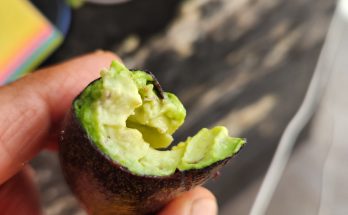By Don Patterson
We are fortunate in the valleys along the upper Rio Laja that our watershed has been designated by the federal government as an area of conservation. In fact, it is the best conserved portion of the greater Lerma-Chapala Watershed. That does not mean it is without some serious problems. It does mean, however, that we still have the opportunity and responsibility to fix them. One of the important investigative tools for resolving environmental problems are maps, especially distribution maps.
To begin with, no map is objective because all maps have an objective. Such is the case for one of the earliest visual and historic descriptions of the upper Rio Laja watershed. It is found on a map painted 442 years ago.
The map is a beautiful historic painting of the condition of the watershed covering a period over three decades. The 16th-century cartographers and artist who made this map certainly had an objective. They were just one of many teams making an inventory of the peoples and lands upon an order in 1576 by the monarch, Felipe II, of Spain. While I don’t have the exact wording of the monarch’s orders to his subordinates, the instructions of U.S. President Thomas Jefferson to Luis and Clark 226 years later, as they set out to explore unknown watersheds west of the Mississippi, seem an appropriate substitute:
“The object of your mission is to explore the Missouri River, and such principle streams of it, as, by its course and communication with the waters of the Pacific Ocean, whether the Columbia, Oregon, Colorado, or any other river may offer the most direct and practicable water communication across this continent for the purpose of commerce.”
What we do know is that Felipe II had incurred considerable expense in his war with England and in building his mausoleum, Escorial. From the king’s perspective, the revenue from his colonies might contain the resources and tribute to reverse his monetary problems. Those resources are clearly present in the map. It took time in the 16th century for the team to map and interview the inhabitants of the watershed. The obvious fold marks in the original map speak of the conditions with which the investigators and cartographers had to work. It was folded in half three times in order to keep it safe in a little space—possibly in saddle bags. These folded maps in the 19th century in the United States were actually called saddle maps. As in the Luis and Clark expedition, they probably made preliminary sketches and kept details in a journal. Unfortunately, either these documents did not survive or have yet to be discovered. If they ever are discovered, there will be quite an adrenaline rush. Nevertheless, the pictorial aspects of the map tell Felipe a great deal about the watershed and its possible exploitation.
The physical aspects of the watershed include mountains, hills, and valleys. The Laja River, called the San Miguel River on the map; with its tributaries and location of natural springs, form an important part of the exploitable hydrological information. The native biology of the watershed includes forested mountains and hills as well as expansive grasslands in the middle and lower elevations. Numbers of prickly pear are located just outside the watershed in the northwest corner of the map. It is worthy to note that the native fauna is almost entirely absent within the limits of the watershed. The artist has clearly indicated by 1580 these animals, like deer, javelin, rabbits, etc., were, with one exception, located outside the western boundaries of the watershed.
The map also gave Felipe II indications of how his colonists and the indigenous peoples were exploiting the watershed by 1580. In the lower elevations of the watershed there are livestock ranches in the grasslands and farms along the banks of the river. In the ridge just to the northeast of San Miguel the map pictures a hydraulic grain mill. Remnants of the old mill can be seen today in the canyon of Charco del Ingenio. Important commerce traveling along the Camino Real Tierra Adentro is being escorted by Spanish Conquistadores.
Meanwhile, the indigenous peoples and their thatched settlements are isolated in the very northwest corner of the map. The women of the villages are peering out to the south where their men, armed with bows and arrows, are hunting cattle and the Spanish. Ambushes along the Royal Road have been strategically situated near river and mountain passes where the intruders were most vulnerable. The conflicts ensuing from Spain’s occupation of the watershed are immediately apparent. The painted map shows the decapitated heads of two friars near a ravine. A short distance to the west, on a ridge above the pass from Chamacuero (Comonfort), an Indian has been hanged. To the east, near the rising sun is another hanging. The Indian was apparently hung for the killing of a Spaniard and his horse, painted directly to the west of the mountain pass near the present day community of Puerto de Nieto.
The mountains with their Oak and Pine forests, the potential minerals, the massive grasslands, abundant water sources, and even the inhabitants, were all exploitable. With this map, Felipe II was able to make informed decisions, which must have made him very happy. This information makes me happy because I am able to compare the watershed over 450 years ago with what it is like today.




